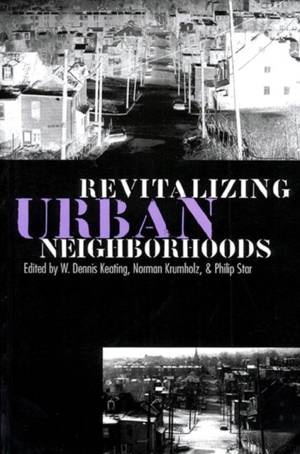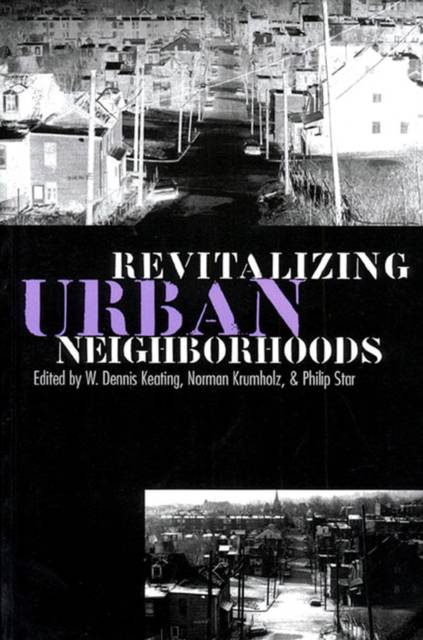
- Retrait gratuit dans votre magasin Club
- 7.000.000 titres dans notre catalogue
- Payer en toute sécurité
- Toujours un magasin près de chez vous
- Retrait gratuit dans votre magasin Club
- 7.000.0000 titres dans notre catalogue
- Payer en toute sécurité
- Toujours un magasin près de chez vous
Description
Since the 1950s and the advance of urban renewal, local governments and urban policy have focused heavily on the central business district. Today, promoters of downtown development still emphasize office and retail expansion, convention centers, sports arenas, festival market places, and tourist attractions. But, as the authors of this volume demonstrate, such development has all but ignored the inner-city neighborhoods that continue to struggle in the shadows of high-rise America. Revitalizing Urban Neighborhoods addresses that alarming oversight. This up-to-date analysis of urban neighborhoods in the United States from 1960 to 1995 presents fifteen original and thought-provoking essays by many of the leading scholars of urban planning and development. Together they show how urban neighborhoods can and must be preserved as economic, cultural, and political centers. In this unique resource, the authors examine the growth and evolution of urban neighborhoods; illustrate what approaches have and haven't worked in a number of U.S. cities, including Chicago, Detroit, Cleveland, Los Angeles, Boston, and Minneapolis; investigate the expansion and widespread successes of Community Development Corporations in neighborhoods around the country; provide a comprehensive analysis of federal policies; and discuss the prospects of urban neighborhoods from a realistic perspective. These authors remind us that, as Americans lead more mobile and private lives, the role of urban neighborhoods has changed dramatically in the wake of declining population, jobs, and community spirit. After reviewing these unsettling trends, they assess the current status of urban neighborhoods and revitalization projects and point the way to alternative policies. While other works have addressed individual issues of urban revitalization, none provide the comprehensive and practical overview found in this volume. It is an invaluable source for students, educators, and practitioners of urban planning and development and anyone concerned with the prosperity of America's cities and the future of her neighborhoods.
Spécifications
Parties prenantes
- Auteur(s) :
- Editeur:
Contenu
- Nombre de pages :
- 304
- Langue:
- Anglais
- Collection :
Caractéristiques
- EAN:
- 9780700607907
- Date de parution :
- 16-10-96
- Format:
- Livre broché
- Format numérique:
- Trade paperback (VS)
- Dimensions :
- 153 mm x 228 mm
- Poids :
- 458 g

Les avis
Nous publions uniquement les avis qui respectent les conditions requises. Consultez nos conditions pour les avis.






